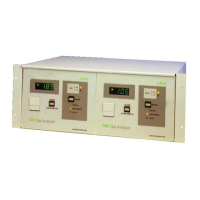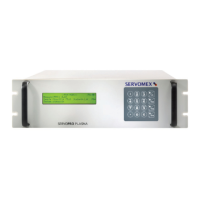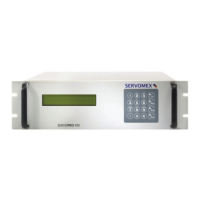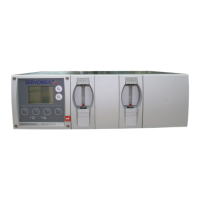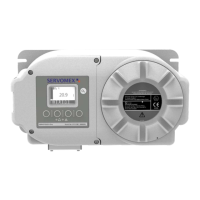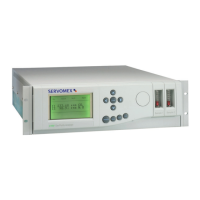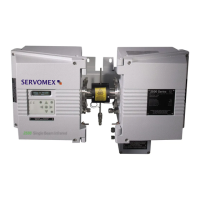4.5
4.3 MECHANICAL ZERO ADJUSTMENT
Section 3.6 gives details of how to calibrate the analyser. If the zero point of the analyser cannot
be calibrated then the mechanical zero will require adjustment. There are two adjustments
possible, fine and coarse. The coarse adjustment is done as part of the cell replacement
procedure and is described in Section 5.3.3.
To adjust the fine mechanical zero:
1. Allow the analyser to warm up for 12 hours. The temperature of the transducer is
available by displaying parameter 17. Normal operating temperature is 60°C.(110°C for
1132 Transducer).
2. Pass nitrogen as a zero gas through the analyser at a cell flow rate of 100 - 200ml/min,
(max 150ml/min for 313 and 364 cell).
3. DISPLAY parameter 14, the uncorrected oxygen reading. If this is greater than ±2% then
the mechanical zero will need adjusting.
If the reading is greater than ±6% then the coarse mechanical zero will need adjusting or
there is a fault in the analyser, e.g. the cell has moved. It is recommended that the cell
is re-installed in the analyser. See Section 5.3.2.1.
4. Remove the front panel of the transducer enclosure by unfastening the four 6mm socket
head screws.
5. Remove the insulation by pulling it out by the corners.
CAUTION
The inner transducer box will be hot. Take precautions to prevent burns.
Temperatures up to 110°C (230°F) may exist if an 1132 Transducer unit is
fitted.
6. The inner transducer box has a blanking plug on the front. Remove this.
7. Turn the screw exposed beneath the blanking plug to adjust the zero, clockwise to
increase the reading. The uncorrected oxygen value (Parameter 14) should be displayed
when making this adjustment.
8. If the adjustment screw has insufficient travel then the coarse zero will need adjusting.
See Section 5.3.3.
9. Replace the blanking plug, insulation and front cover.
10. Re-calibrate the analyser.
